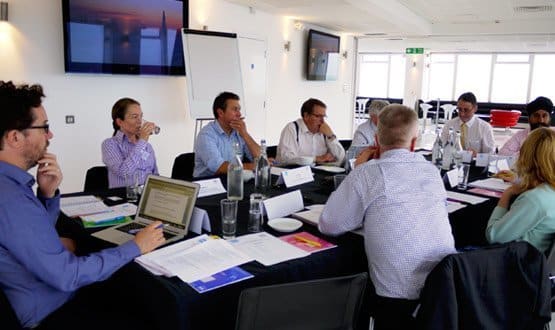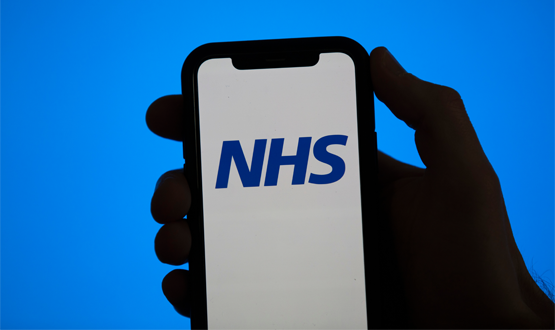The Big EPR Debate: round table
- 19 June 2013

Health secretary Jeremy Hunt made his speech calling for the NHS to become paperless by 2018 at the end of January.
The best part of six months later, NHS England is within weeks of issuing guidance on the first step; how trusts should plan to implement electronic patient record systems.
Trusts will be expected to have plans in place by April. So there is a real sense that the NHS is starting to get to the business end of the latest attempt to digitise the health service.
That may explain why The Big EPR Debate round table organised by EHI earlier this week was so focused on money, on the detail of how to shake up the healthcare IT economy, and on the finer points of leadership for change.
£260m to catalyse NHS IT
The issue of money came up with the arrival of NHS England’s director of strategic systems and technology at the debate in London’s Millbank Tower.
She told the panel of industry experts, IT directors and clinicians involved in major EPR implementations, that the guidance was just days from being submitted for gateway review, and that it would be linked to the £260m ‘technology fund’.
“To get people’s attention on this, the guidance, when it comes out, will be linked to the technology fund, which is 260m quid,” she said.
“Call me an old cynic, but I think there is more chance of people reading it if it comes with an application form at the back to get hold of the money.”
The pot of money in question was called the ‘Digital Challenge Fund’ when it was announced by the Department of Health in May.
In its initial press release, the DH said Hunt had found the money for e-prescribing and, possibly, other patient safety initiatives.
However, it is now very definitely the responsibility of Bryant’s directorate at NHS England, where it has been renamed the ‘Safer Hospitals Safer Wards Technology Fund.’
At the round table, Bryant said that while e-prescribing remained a hook for political support she hoped the cash available would have a much bigger impact; acting as a “catalyst” for a “technology revolution.”
“That might take ten years, but we want people in every organisation to think through how to plan for it,” she said. “What are the top five things that every board wants to do over the next five years?
“The money is there to stimulate people to do that; it is not enough for everything, but organisations must want to do this themselves.”
NHS England will examine – or conduct “due diligence” on – those initial plans, she added. But over time it will want to “work in partnership” with trusts, helping them to tackle projects in the right order, measuring benefits, and “fighting” the Treasury for further funds.
Starting from different points
EHI launched The Big EPR Debate to gather views about how to get NHS IT in England onto the right track, after a decade in which The National Programme for IT in the NHS substantially failed to deliver, particularly for acute trusts.
Early responses to the debate showed enthusiasm for revisiting some of the ideas behind the NHS’ pre-NPfIT strategies, which focused on building an EPR from a suite of core systems, so that information could be ‘collected once and used many times.’
A subsequent survey confirmed support for NHS England setting out a roadmap or roadmaps for trusts at different stages of digital development, backed up by implementation milestones and ‘meaningful use’ payments on the US model.
The participants at the round table certainly felt that different trusts would need different guidance. Tanya Pankhurst, a consultant at University Hospitals Birmingham NHS Foundation Trust, said at the outset that trusts would need “choice”.
While some big organisations – like her own – have been able to make progress – by developing its own prescribing information and communications system – she pointed out that smaller trusts may lack the capital to do the same.
Dr John Parry, a GP and clinical director of TPP, pointed out that trusts based on district general hospitals may also have different IT imperatives, given the renewed push on integrated models of care in which more services are delivered by GPs and community services.
Kick starting the right projects
To a point, therefore, Bryant’s comments about trusts identifying their own priorities chimed with the views of the panel.
At the same time, though, some participants were concerned that the guidance might not be detailed or prescriptive enough for trusts to come up with effective programmes of work.
For example, the panel agreed at the outset that Hunt’s talk of a paperless NHS was not particularly helpful, both because it was vague and because it might lead some trusts to focus on scanning documents, rather than on building an integrated EPR.
As Dr Pankhurst later pointed out, even when it comes to e-prescribing “there is e-prescribing and there is e-prescribing”; “you can create [closed loop systems] that really drive up quality of care, or you can replicate paper systems as electronic systems, which are just as rubbish.”
Bryant clearly recognised the problem, saying she wanted to pitch the guidance between being very high level and “so detailed that people are paralysed by it.”
But she also pointed out that there is a real issue about NHS England, which is not meant to be ‘the centre’ on the model of the old DH or even the old NHS Executive, “mandating” things for the rest of the NHS.
Asked about incentives and meaningful use, she also indicated that NHS England may have to work through new commissioning structures and revisions to Payment by Results; although it is already looking to do both.
Open up your APIs, and use the NHS Number
The round table agreed that other steps will be needed to secure the IT that the NHS needs and to make sure it is implemented effectively.
Ian Denley, formerly of System C, and now co-founder of Shearwater Healthcare Solutions, said suppliers should be required to open up their application programming interfaces, so smaller companies and trust innovators could work with them.
Ewan Davis of Woodcote Consulting, a founder of HANDI Health, agreed. He said the new GP Systems of Choice contract had already done this for primary care systems, and now it was time to tell acute suppliers that “if you want to get paid, you have to expose your APIs.”
Bryant pointed out that NHS England is now in charge of GPSoC and said “the guidance will do this” – although there is, again, an issue of whether it can “mandate” open APIs or merely advise them.
Round table participants also wanted the guidance to require the NHS Number to be used as the NHS’ primary identifier and to support other standards that would ensure interoperability.
This was another battle that Bryant could indicate had already been won, although she said there would be more to come on the subject in December’s technology strategy, ‘Unleashing the Power of People.’
Leadership is vital
All of the round table participants agreed that board-level support and clinical engagement are essential for the success of IT and information projects.
Paul Rice, head of technology strategy at NHS England, suggested that better management information ought to secure the first; although the phrase annoyed Johan Waktare, a consultant at Liverpool Heart and Chest Hospital, which is eight days from implementing an Allscripts EPR.
“There is no such thing as management information or clinical information. There is just information,” he argued, adding that good management and good clinical care “are aligned much more than people think.”
“One of the biggest costs for us [as a trust] is a patient having the chest re-opened. We want to stop that happening. But guess what the patent wants?”
Bryant, who said several times that she wanted new systems to tell “the whole story” of a patient’s care to the clinicians caring for them, was interested in how clinicians like Waktare got to influence IT.
She asked if the title of chief clinical information officer helped, and whether NHS England should back the CCIO Leaders Network that EHI set up following the successful EHI CCIO Campaign.
Rice urged people with views – and “good quotes” about clinical leadership in IT – to contact his team urgently. “The weakest section of the guidance at the moment is the one on clinical informatics leadership,” he admitted. “It’s a bit hold hands and kumbaya at the moment.”
Time to move on from NPfIT?
Mark Treleaven, vice-chair of the Intellect Health Council, welcomed this kind of engagement as a refreshing change from the approach taken by the leaders of NPfIT. But at the close of the round table, Bryant recognised that it casts a long shadow.
“After NPfIT, it is hard to be in a central leadership position in NHS IT,” she acknowledged. “We are not starting from a zero base, but from something like a minus 20 base.
“If we get just a few words wrong, then the press and those people who do not want to do this will naysay us. So I really want backing for change.
“We can talk about it if we do get it wrong, so we can get back on track, because this is going to be a ten year vision." And at the end of those ten years, she said: "I want the NHS to ask ‘how did we ever manage without this’?”
EHI live blogged the round table, and an archived version of the coverage is still available.

EHI is running The Big EPR Debate to give readers a chance to shape the future of electronic records and a paperless NHS. What should NHS England’s guidance cover? What is an EPR? What is essential and what can be left for later? What should the next steps be. Join the debate.




